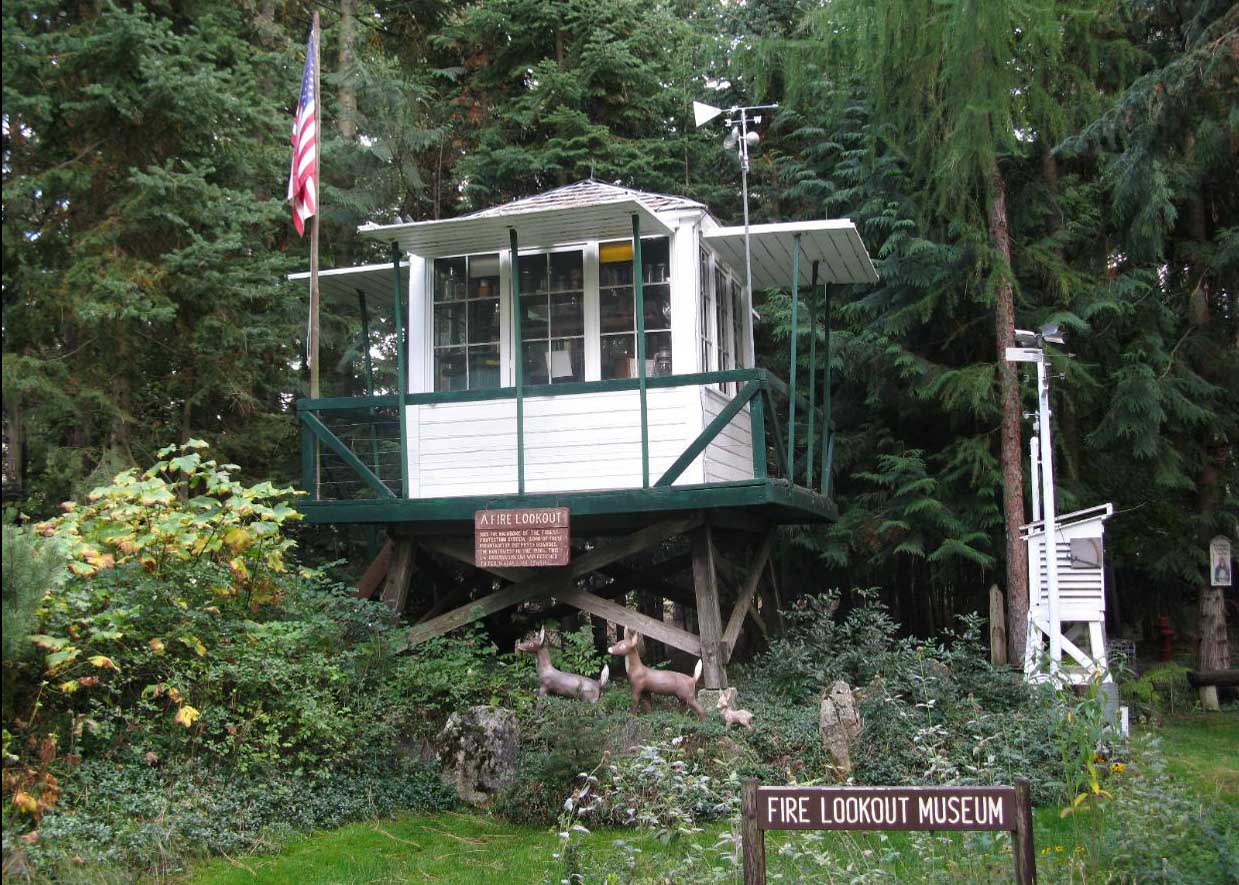The L-6 Lookout at the Fire Lookout Museum in Spokane is an unusual Type 1 Re-Location. It was pieced together in the early 1980s for display at the museum out of salvaged parts from seven L-6 lookouts which had been deactivated and torn down.
LOOKOUT SITE REGIONS: Origin Sites ~ Mt, Rainier, North-Central & North East, Ray’s Lookout ~ North East

Fire Lookout Museum
The non-profit and non-commercial Fire Lookout Museum was founded in 1969 by the Kresek family and the Historic Lookout Project.
FFLA’s LOOKOUT NETWORK ~ Vol. 3-4, Winter, 1993: “THE FIRE LOOKOUT MUSEUM ~ In 1969, when Ray Kresek began compiling the work that eventually led to the publication of his books FIRE LOOKOUTS OF THE NORTHWEST and FIRE LOOKOUTS OF OREGON AND WASHINGTON, he also began collecting a huge assortment of photographs of lookouts long since destroyed. Then, as it became obvious that lookouts were becoming a thing of the past, his research led to memorabilia, old lookout furnishings, tools, signs, and even the outdated radios from the era of lookouts.
Then came a fire tower itself … several surplus fire towers.
Kresek chose for the actual museum the smallest of all: an 8 x 8 foot “L-6” style cab. It is the last one of more than 200 just like it which were built atop tall wooden towers all across the country from 1930 until 1936. Its size made it possible to trailer the cab filled with relics to State fairs throughout the Pacific Northwest.”
FIRE LOOKOUT MUSEUM WEB SITE: “As objects related to wildfire detection and firefighting became obsolete there came the need for a repository to preserve their history. The Fire Lookout Museum was the logical place for 19,000 such relics: from lookout towers, to possibly the world’s largest collection of Smokey Bear treasures.”
The Museum’s collection includes a re-located DNR Fire Guard Station, a vintage fire truck, three lookouts, vintage fire tools, USFS cookware and chinaware communication equipment and much more.
FIRE LOOKOUT MUSEUM WEB SITE: LOOKOUT TOWERS ~ One of only 2 remaining L-6 towers built during the 1930s; restored from the ruins of the last of 200. A replica of a 1929 spar tree lookout stands 60’ tall beside it. A third lookout, a 46’ tall MC-40 all steel fire tower, manufactured by Aeromotor of Chicago in 1941, owned and operated by the museum is 9 miles east…”
Parts of 7 ruined L-6 lookouts moved to Fire Lookout Museum
FFLA WEB SITE, firelookout.org : ”The Fire Lookout Museum Lookout located in Spokane, WA is actually a combination of parts salvaged from seven L-6 lookouts that had been torn down. At one time, more than 200 of these 8′ x 8′ wood USFS-design cabs stood in the Pacific Northwest, now only three remain at their original locations. Some were constructed on top of log towers up to 99′ tall. This restored structure on a 6′ wood tower also includes lookout memorabilia. It is open by appointment with Ray Kresek.”
RAY KRESEK EMAIL: “The L-6 here at the Fire Lookout Museum was built with parts from the ruins of seven L-6 towers in WA; hinges, shutters, shutter brackets, door, floor, catwalk, tower posts, X braces, bolts, siding. Porcupine (Chapter 10), Annie, Buckhorn, Hull (Ch 14), Stranger, CCA, Turnbull (Ch 15). We weren’t able to find any window frames, so they aren’t authentic. We chose also to panel the inside walls and create an attic with ¼” plywood for an exhibit at state fairs in Spokane & Yakima where it took the highest ribbons in 1984, and in OR where it was the guest of honor at the 1985 Oregon State Fair in Salem. It has rested in my back yard ever since. It is scheduled to be moved to the Priest Lake Museum in Idaho when I can no longer maintain the Lookout Museum. Since it is not an authentic fire lookout, there was controversy when Keith Argow insisted on making it a historic lookout on his National Historic Lookout Register.”
RAY KRESEK EMAIL: ”A side note: We have parts from the Stranger #2 1936 L-6 tower in my backyard as part of the Lookout Museum. Nuts & bolts, shutter hardware.”

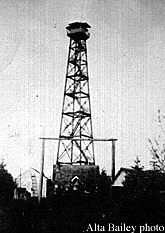

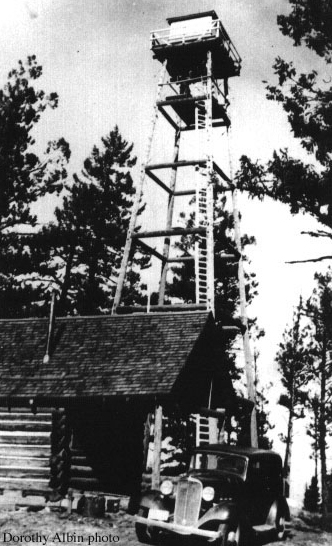

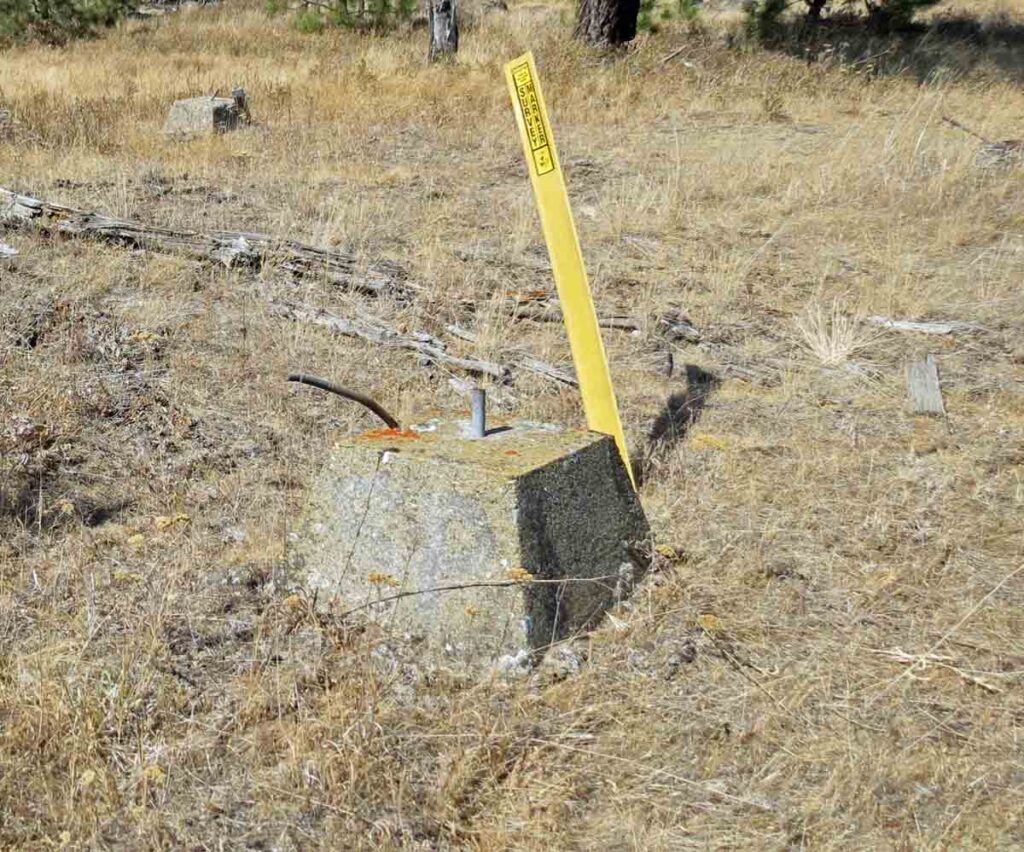
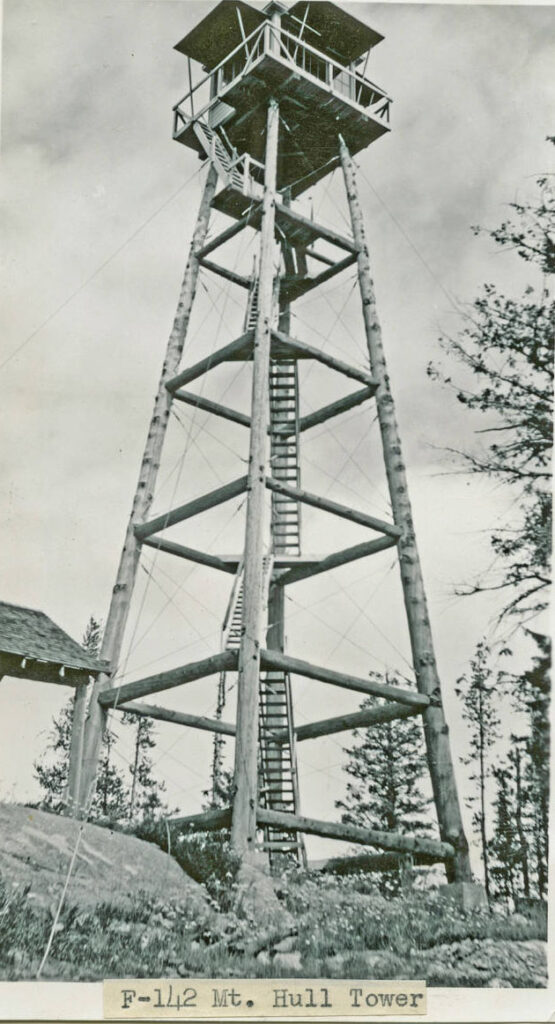

Our visit to the Fire Lookout Museum ~ 9/4/2021
As described on the museum’s web site, the one acre Fire Lookout Museum is located at Ray Kresek’s home north of downtown Spokane. The Museum is open to the public by appointment. After making our appointment, we spent a delightful afternoon visiting the museum and swapping lookout tall tales with Ray.
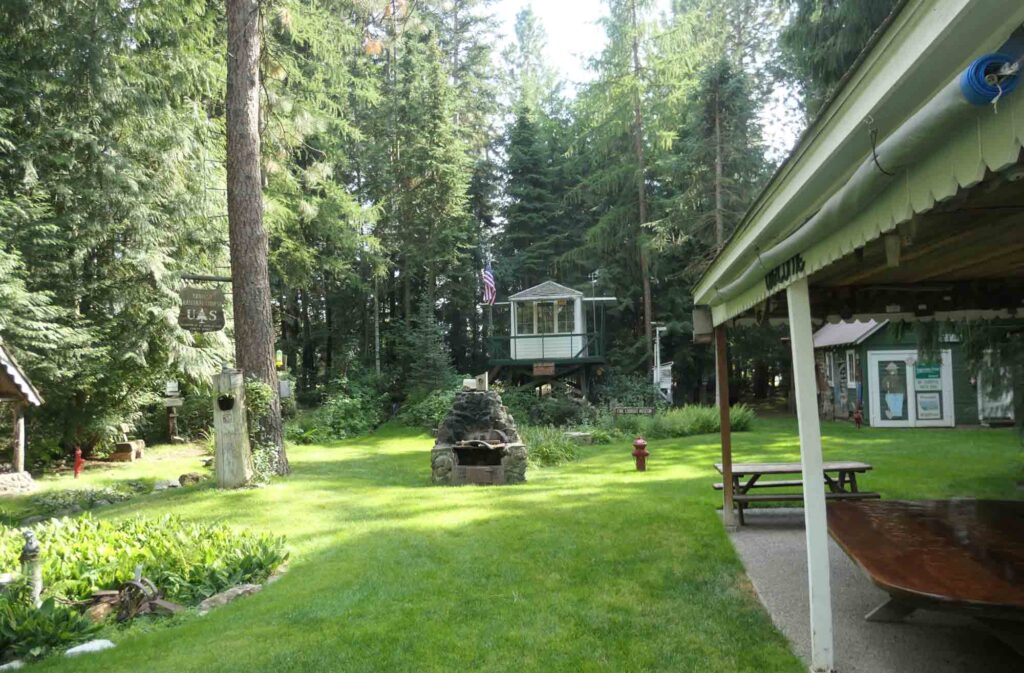
Ray is a life-time contributor to the battle to save threatened lookouts and educate the public in the history of and the need to save them.
FFLA’s LOOKOUT NETWORK ~ Vol. 6-1, Winter, 199-1995: “Ray became acquainted with fire lookouts at the age of 3. His father, a radio technician for the Washington Division of Forestry (DNR today), began it all by taking him along for companionship whenever lookouts along the coast needed service….He began his first full-time job on a lookout when he was 16, and was assigned to the SDF’s Aeneas Lookout in northcentral Washington. Wages were $6.83 a day. One summer was enough for him. For the next 35 years he fought fires for a living……(with the Spokane Fire Department)….He retired from the fire service in 1988. That summer…..he spent up on…8429’ Heavens Gate Lookout…He calls this full circle in his career his “success story.”
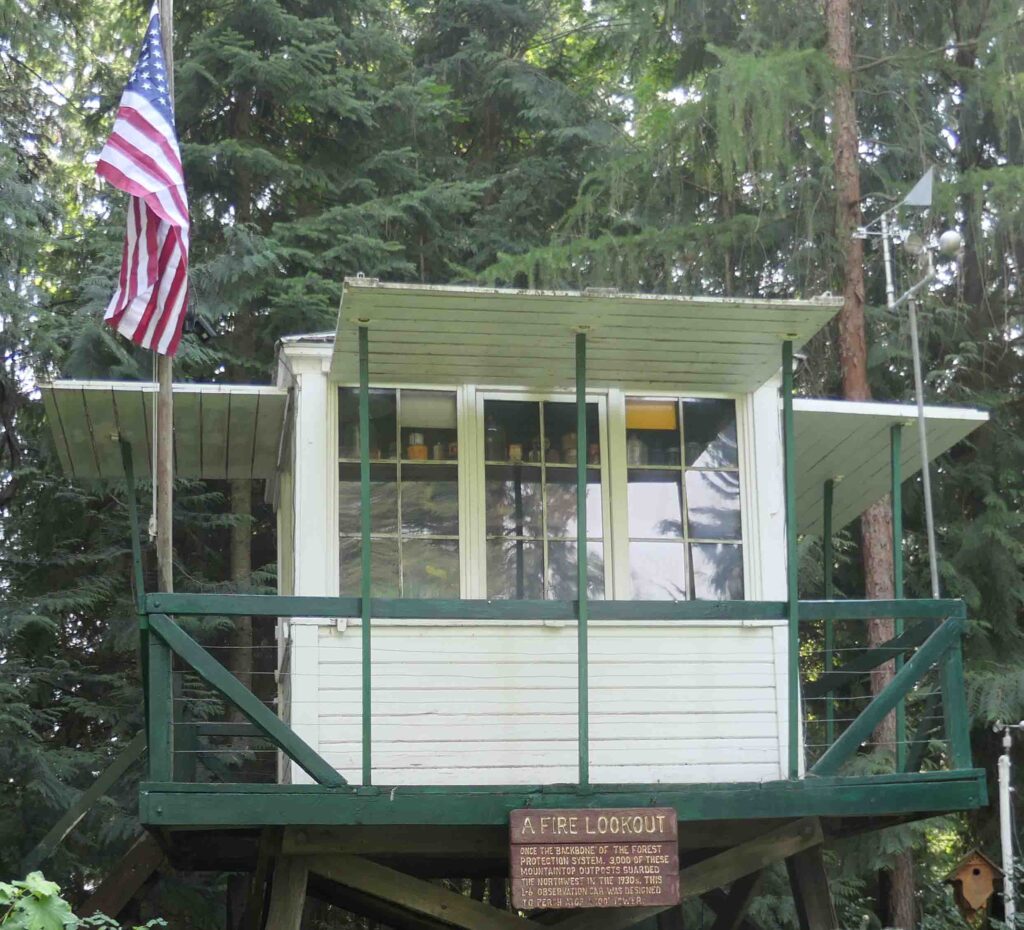
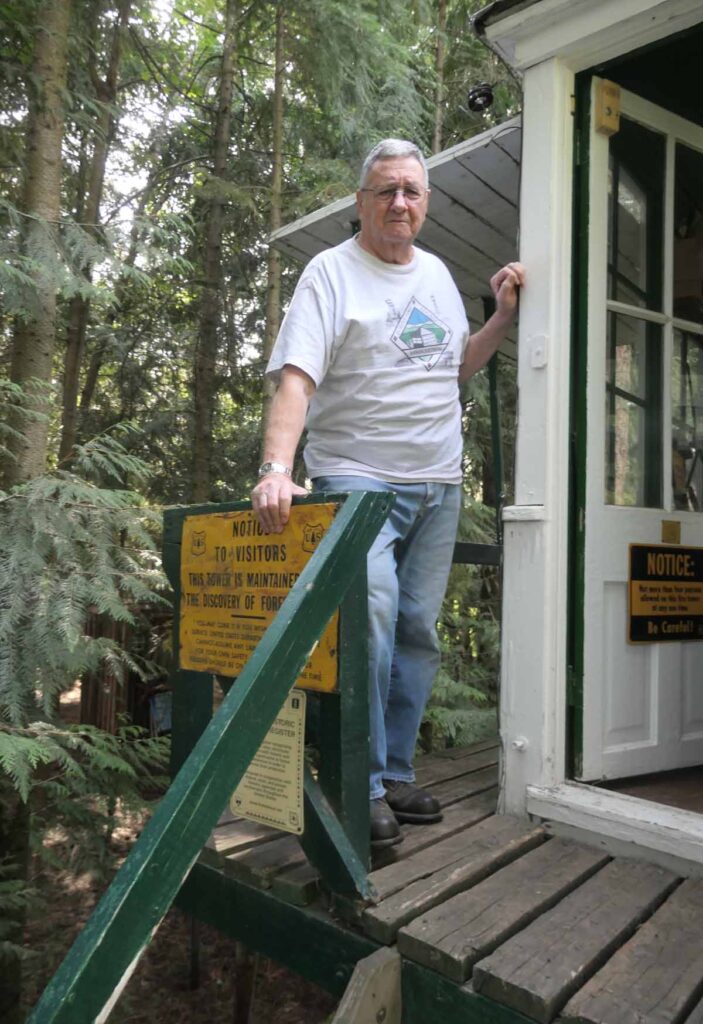

FFLA’s LOOKOUT NETWORK ~ Vol. 3-4, Winter, 1993: “The L-6 cab was trailered around to State Fairs throughout the Pacific Northwest…Most heartwarming were the moments when oldtimers would come inside and set the fire on a distant smoke, then relax in the lightning insulated chair with tears of nostalgia for the summers of long ago when they manned their lonely towers….signed Ray Kresek”
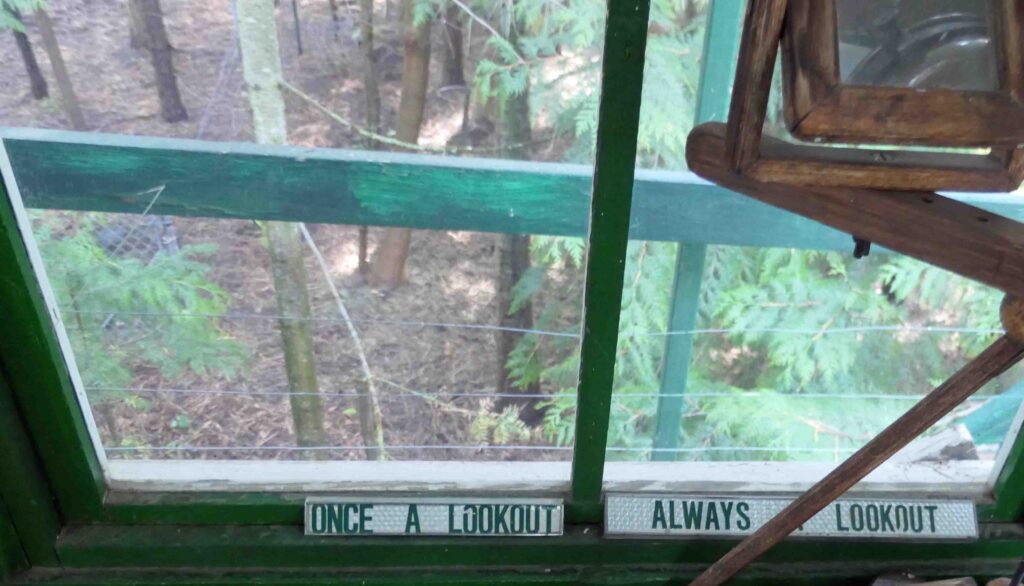
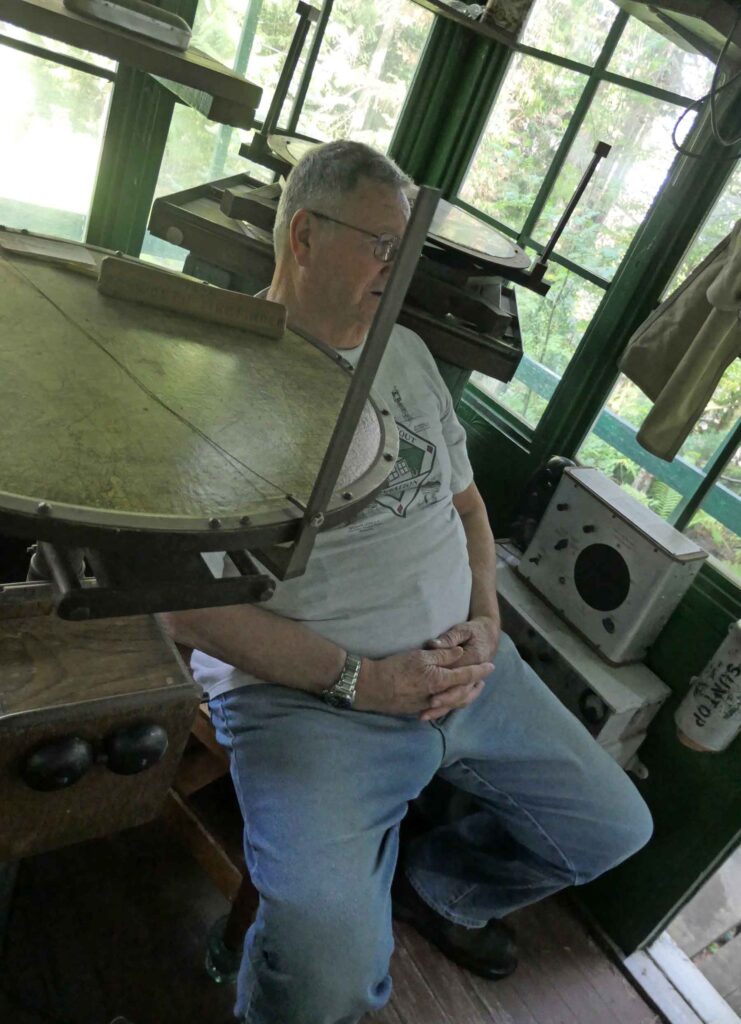



The lookout was furnished with firefinder, vintage telephone, radio and other devices.
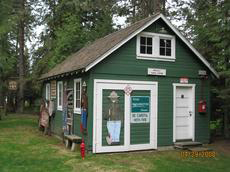

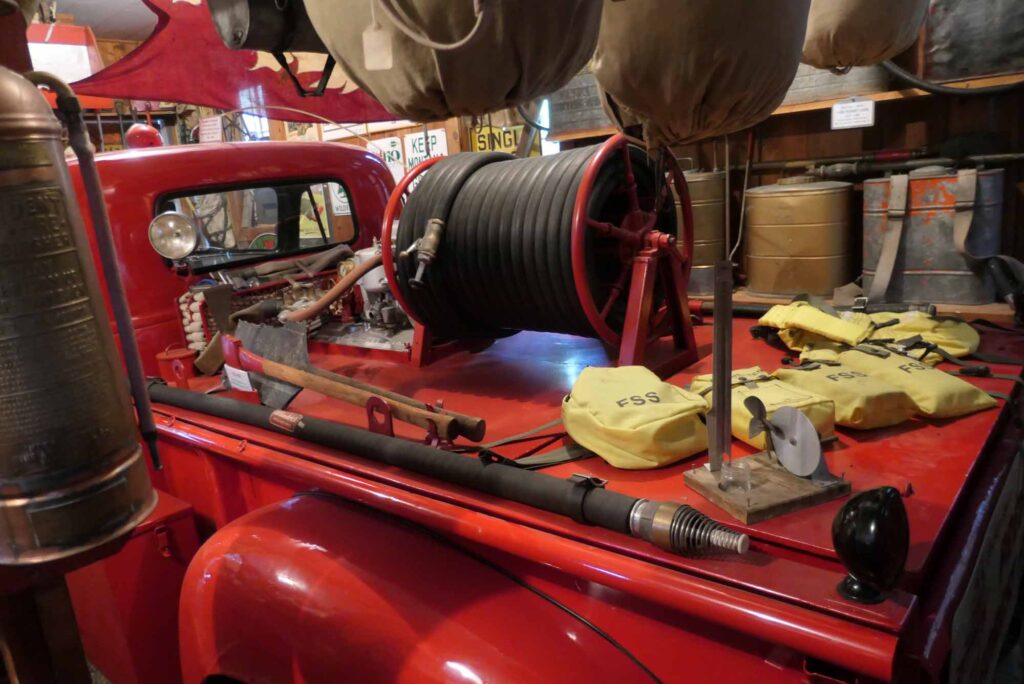
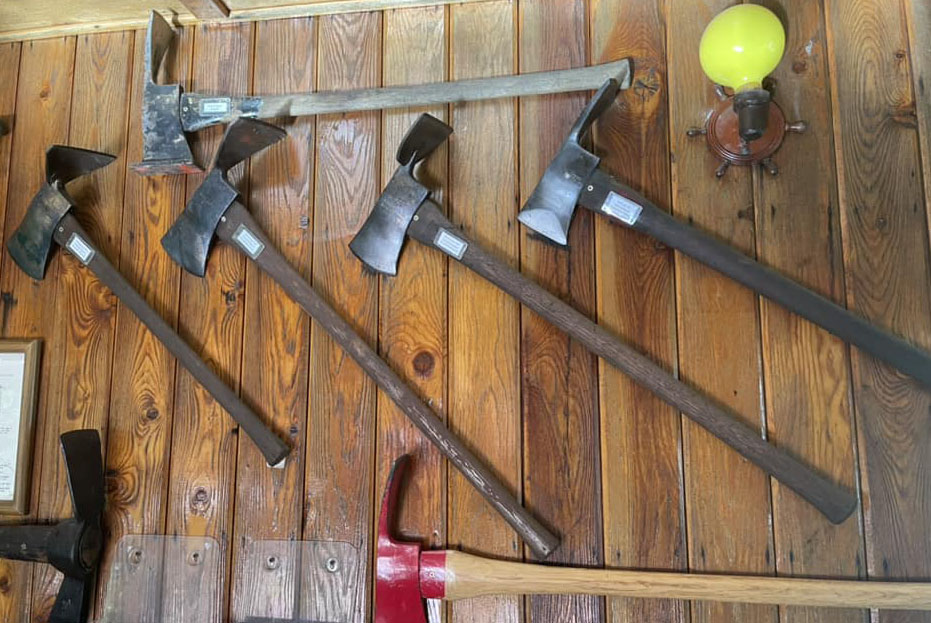
The museum had two other lookouts. A 60′ replica spar tree lookout stood in the museum yard. The museum also owned a 46′ tall MC-40 steel fire tower which had been moved by Dave Kresek from Idaho to his property 9 miles east of the museum.

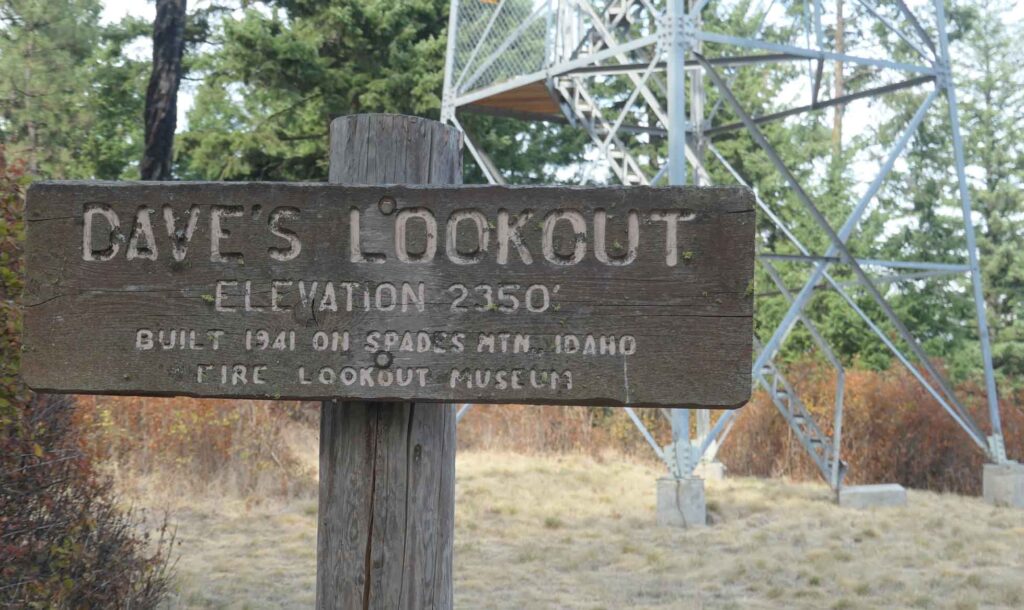


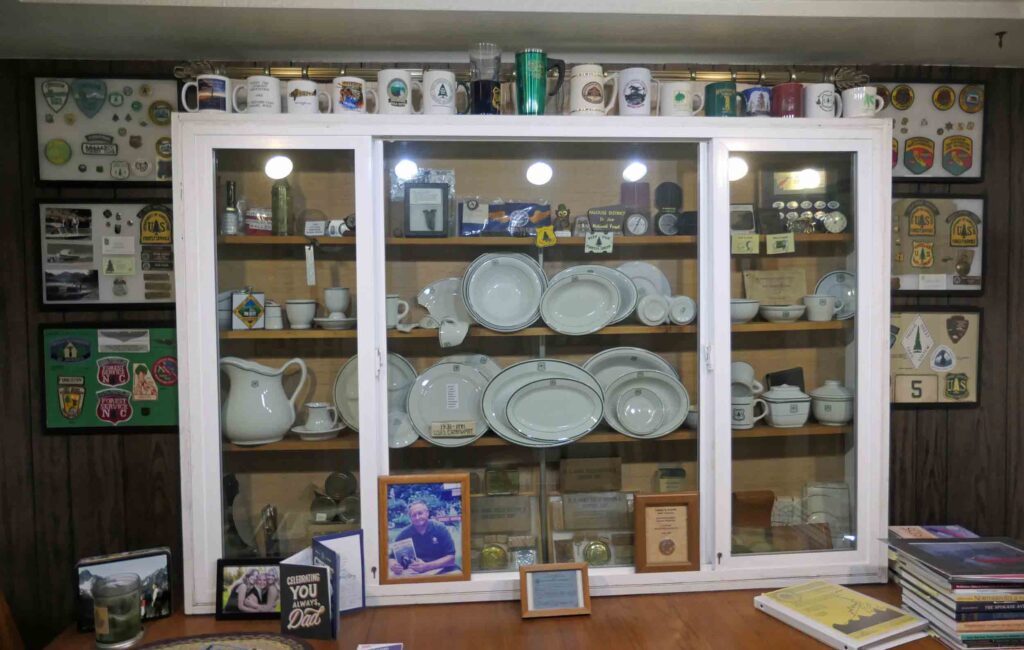

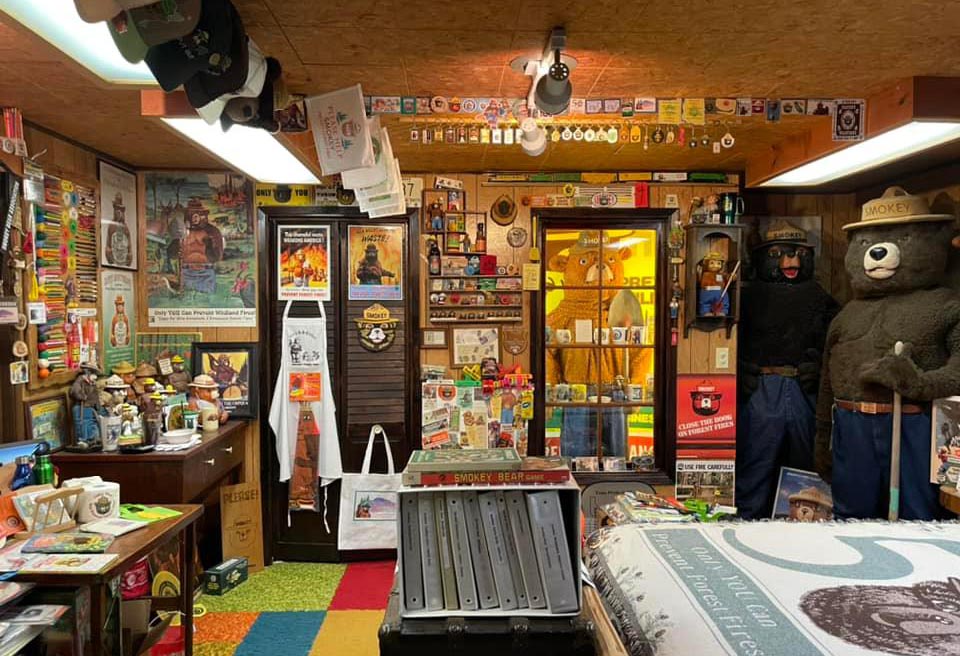
Visits to the Seven Original Lookout Sites:
We have only visited three out of the seven ORIGIN SITES as of the end of 2022.
- Porcupine Mountain ~ Site still to be Visited
FFLA WEB SITE, firelookout.org : “This 100′ treated timber tower with 8’x8′ cab and accompanying ground house, built in 1937, was removed about 1968.”
This site is on Weyerhaeuser property and requires a Weyerhaeuser Vail Tree Farm permit to visit it. It requires an 11 mile/2000’ elevation gain road walk to visit it from the closest non-motorized permit entry gate.
2) Buckhorn Mountain ~ Site still to be Visited
FFLA WEB SITE, firelookout.org : “This log cabin and 84′ pole tower with L-6 cab were built in 1933. The tower only had ladder access, no stairs. It was removed in 1958.”
We planned to visit Buckhorn in 2021, but the area was closed due to nearby fires. There is an access problem as a mining company owns the summit and has an open mine on the north side.
3) Hull Mountain LO Site ~ Our 8/26/2021 Visit
FFLA WEB SITE, firelookout.org : “Built in 1934, this 72′ pole tower with L-6 cab and accompanying log cabin were abandoned in the 1940s. The tower was removed in the 1950s and the log cabin was given to the Oroville Boy Scouts. It burned in the 1960s.”

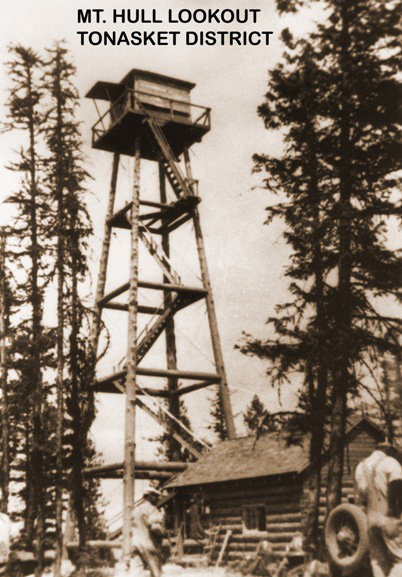

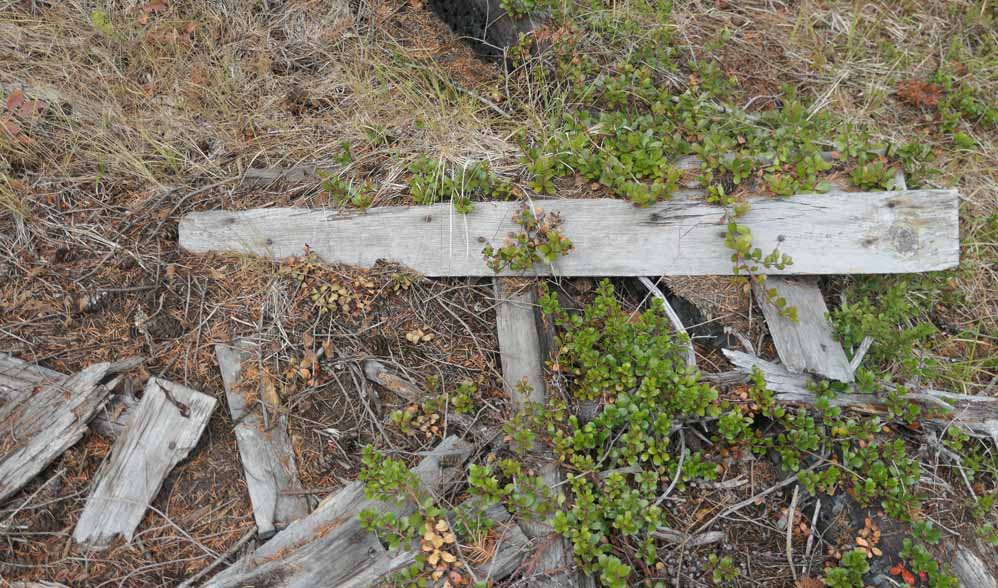

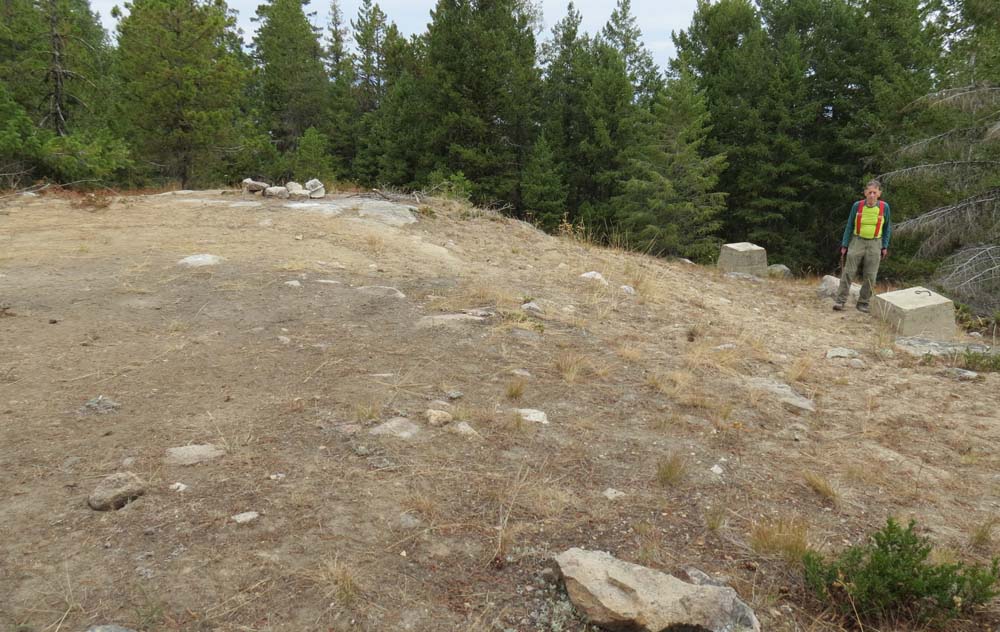


4) Mount Annie ~ Site still to be Visited
FFLA WEB SITE, firelookout.org : “This 65′ pole tower with L-6 cab and accompanying log cabin were constructed in 1933. In 1956, it was discovered that one of the tower legs was hollow with rot. The tower was removed the following year, never to be replaced.”
Reported as road walk and bushwhack through logging debris ~ 2 to 4 mi/400-950’ gain depending on final road condition.
5) Stranger Mountain #2 LO Site ~ Our 8/31/2021 Visit
Peggy and I drove to the abandoned lookout site atop Stranger Mountain. There are now a number of large communication towers atop Stranger Mountain and another one was being built. There were fire lookouts from 1930 until 2008, but there are no Fire Lookouts on Stranger Mountain now.
FIRE LOOKOUTS OF THE NORTHWEST ~ LOOKOUT INVENTORY, REVISED 2015 : “ …1930: platform twr. Cabin. 1936: 50’ pole L-6 twr. 1959: 40’ wdn DNR twr (cab sold to Dave Kresek, moved to Crystal Ridge near Fernwood, ID). 1983: 42’ wdn DNR twr (moved to Colville Fairgrounds). [Gone 2008]”
Stranger Mountain has an unusual spot in the story of Washington State Re-Located Lookouts as three out of the four lookouts that have served on its summit have had all or parts of them moved to other locations. The Kresek family has been involved in two of these moves.
As Ray Kresek wrote in an email to me, ”A side note: We have parts from the Stranger #2 1936 L-6 tower in my backyard as part of the Lookout Museum Lookout. Nuts & bolts, shutter hardware.”



A metal communications tower has taken the place of the pole L-6 lookout tower which stood here from 1936 until 1959. We found no remains of the older lookout when we visited in 2021.
6) Cee Cee Ah (CCA) ~ Site still to be Visited
FFLA WEB SITE, firelookout.org : ”Developed in 1933 with 40′ pole L-4 tower, a 40′ pole L-6 tower was added 1/4 mile north in 1936. The L-4 was removed in 1955.”
Recent reports on the Peakbagger web site describe a gated road walk with a short off-trail segment to reach the lookout site. The round trip distance reported varies between 6 and 9 miles with 1800′ elevation gain.
7) Turnbull LO Site ~ Our 8/31/2021 Visit
FFLA WEB SITE, firelookout.org : “Built in 1938, 99′ L-6 tower was in ruins by 1971.”
The USGS placed Benchmark SV1716 in 1952. The Benchmark is labelled LOOKOUT TOWER. The lookout is described in the NGS Data Sheet as “U. S. Game Preserve 108.8 Ft. High”.
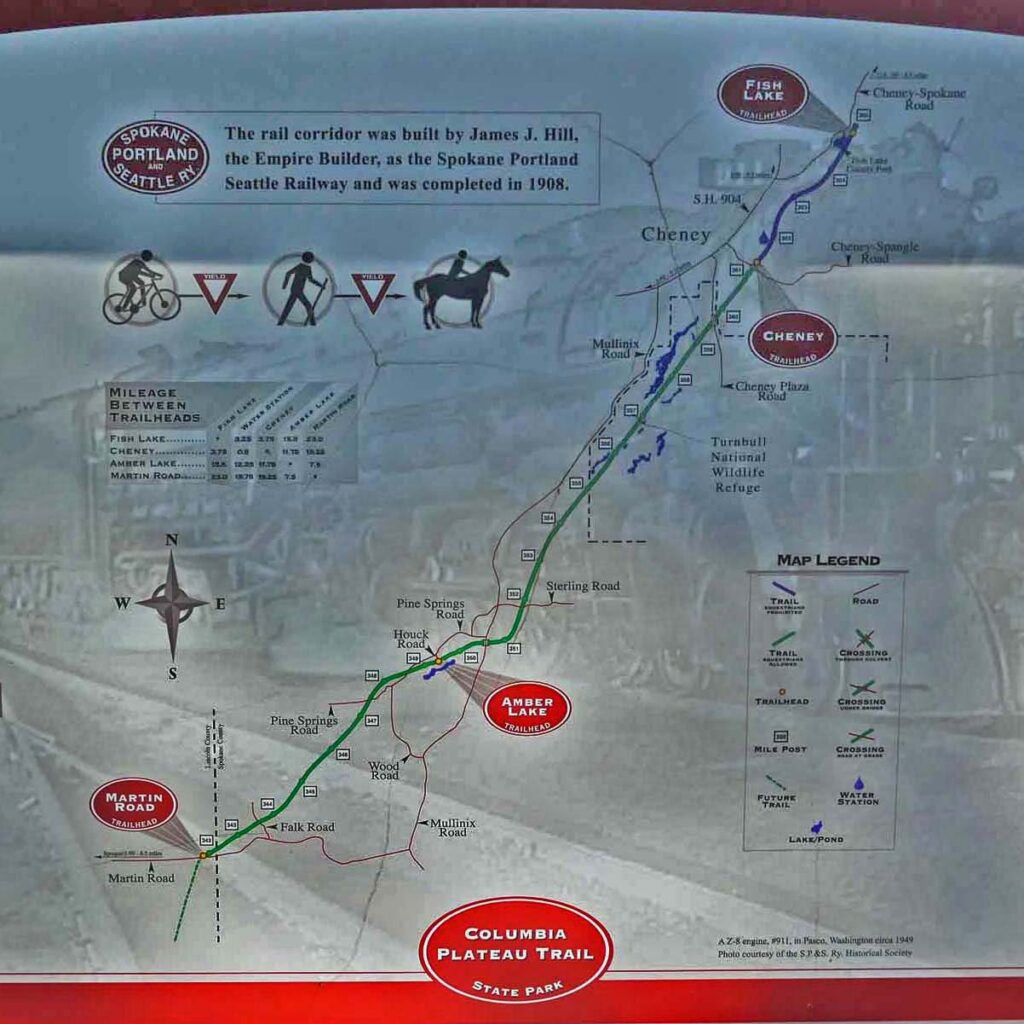

We began our hike on the Columbia Plateau Trail at the Cheney Trailhead. This Rails-to-Trails State Parks Trail led through a combination of dry grasslands and open forests with lakes on both sides of the route.
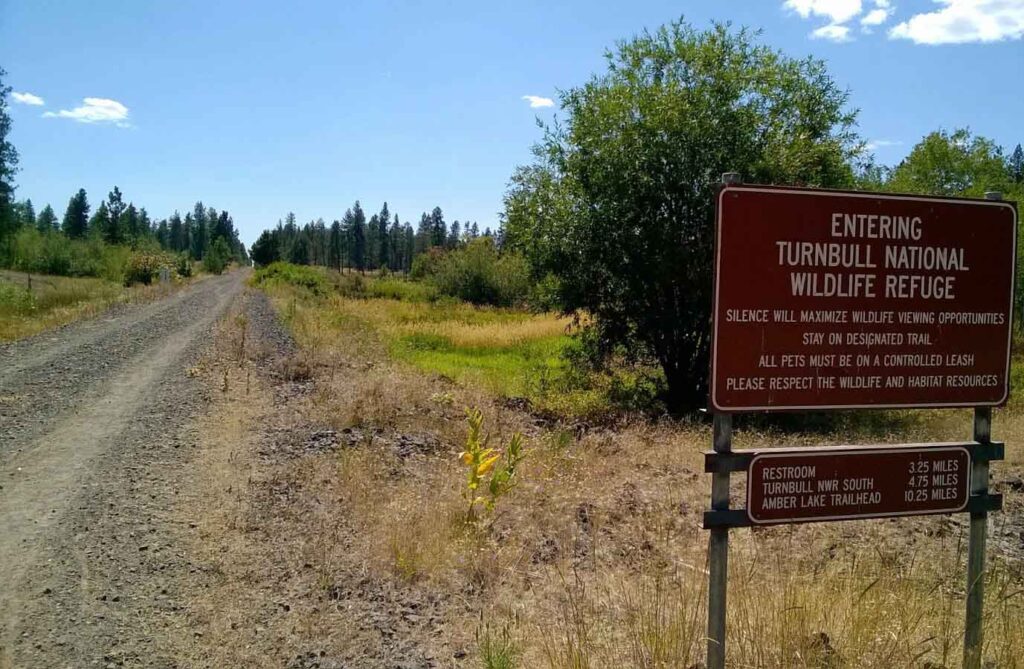
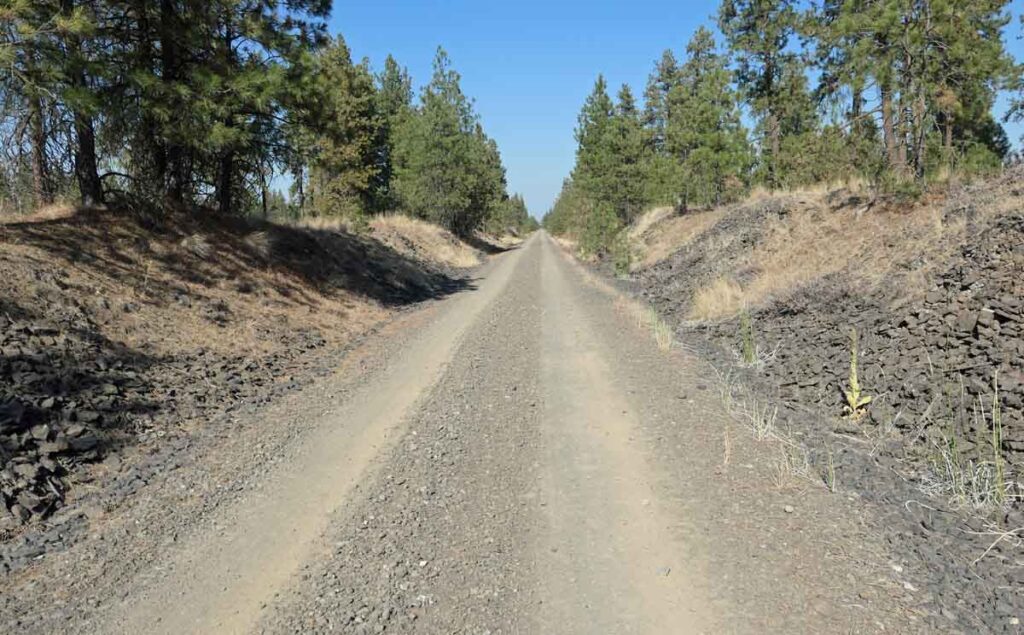
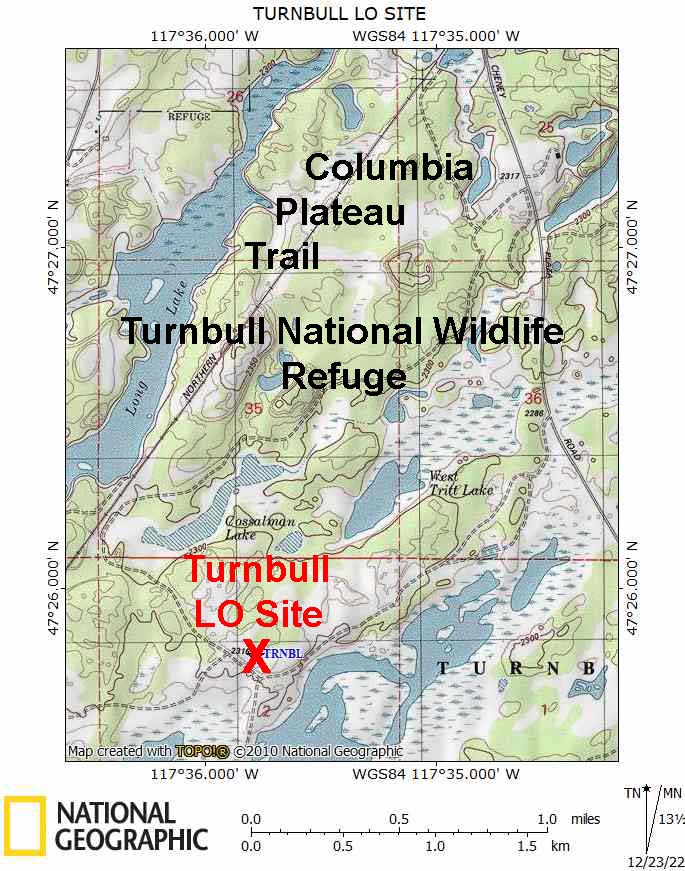



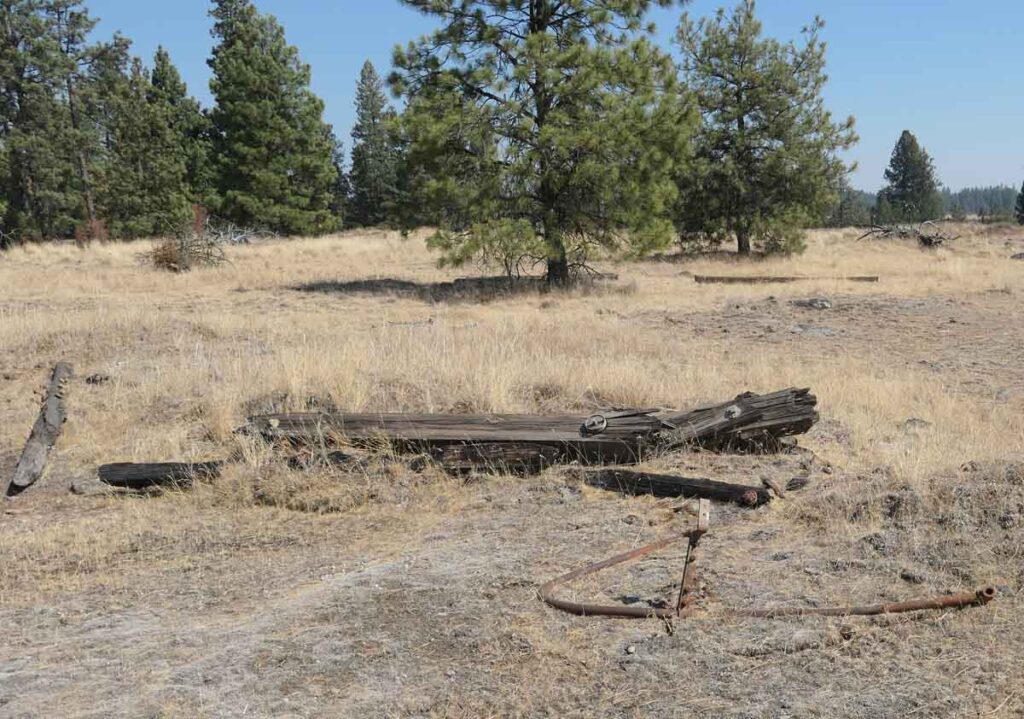
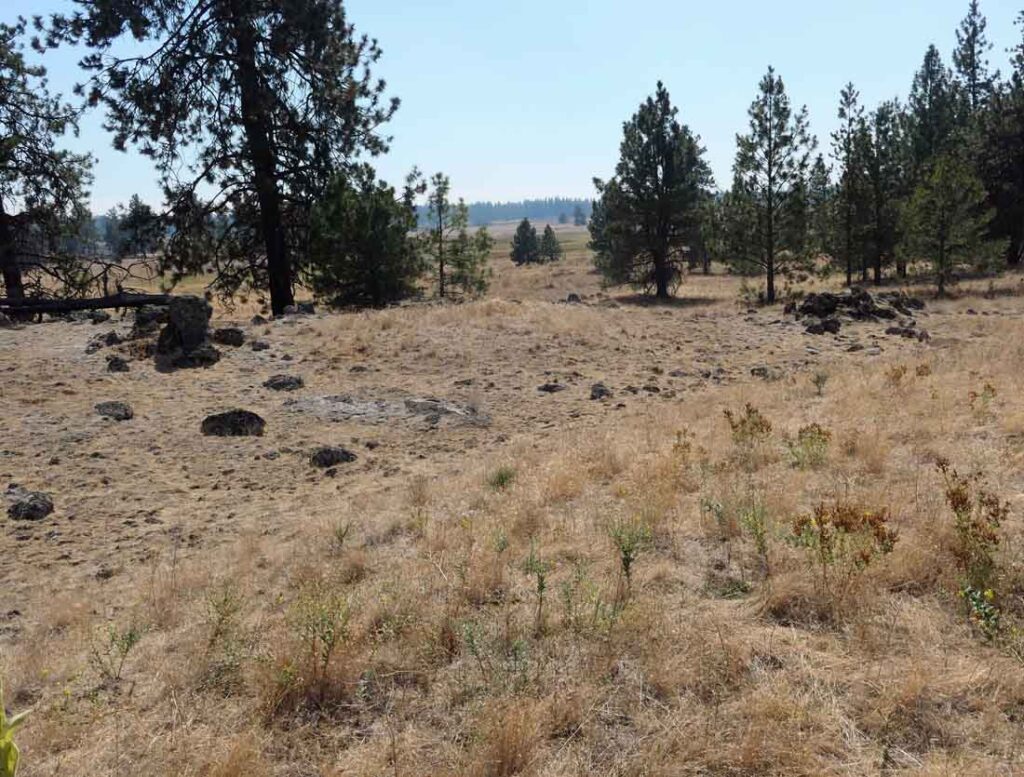
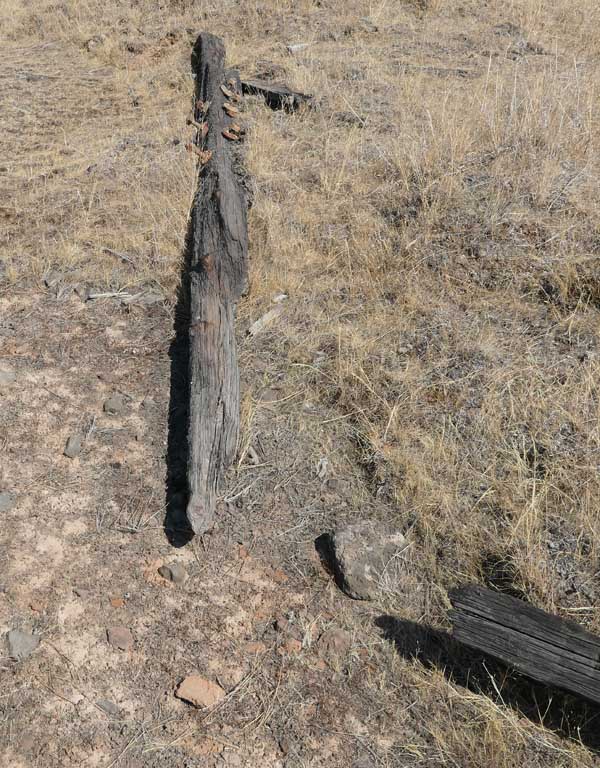

The Turnbull Lookout had looked over near level mixed grasslands and open forests typical of the Eastern Washington scablands. The early settlers gave these barren bedrock and strange rocky land forms this name as the areas were not suitable for farming. They were formed 10,000-20,000 years ago by the series of floods collectively named the Missoula Flood which washed most of the soil off the the top of the basaltic bedrock.
